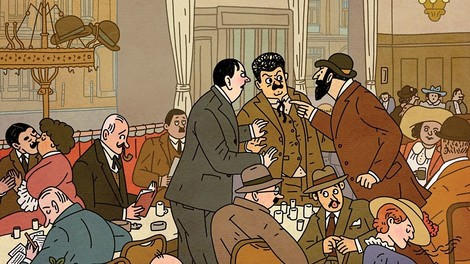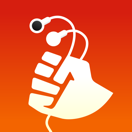sharing is caring
ist wirklich so!
Vielen Dank fürs Teilen!
Kluge Köpfe filtern für dich relevante Beiträge aus dem Netz.
Entdecke handverlesene Artikel, Videos und Audios zu deinen Themen.
Demokratie wurde nicht auf den Straßen erstritten, sondern in Kaffeehäusern des 17. und 18. Jahrhunderts. Zumindest besagt das eine Theorie, die auf den Soziologen und Philosophen Jürgen Habermas zurückgeführt wird.
When social spaces were created outside the direct control of the state (including commercial ones, run for profit), civil society could start to flourish in unexpected ways. This was visible in the spread of café life through European cities in the nineteenth century and afterward.
In seinem Buch “A Rich Brew: How Cafés Created Modern Jewish Culture” (New York University) stellt Shachar Pinsker diese interessante Kaffeehausszene vor. Besonders für Juden waren die Cafés im 19. und 20. Jahrhundert ein wichtiges soziales Umfeld.
The cafés of the various European cities that Pinsker focusses on—Warsaw, Vienna, and Berlin—reflected, with startling specificity, the Jewish reality around them.
Der österreichische Autor Peter Altenberg gab seine Adresse sogar wie folgt an: Wien, Erster Distrikt, Café Central. Auch eine andere Geschichte wirft ein bezeichnendes Bild auf die große Zeit der Kaffeehäuser.
Yet in its prime it was a “place of politics,” and crowded with émigré revolutionaries. A famous story had Leopold Berchtold, the Foreign Minister of the Austro-Hungarian Empire, being warned that a great war might spark a revolution in Russia. “And who will lead this revolution?” he scoffed. “Perhaps Mr. Bronshtein sitting over there at the Café Central?” Mr. Bronshtein took the name Leon Trotsky, and did.
Diese Zeiten sind lange vorbei. Aber die Legende lebt wieder in Pinsker's Buch auf.

Quelle: Adam Gopnik Bild: Illustration by R... EN newyorker.com
Bleib immer informiert! Hier gibt's den Kanal Fundstücke als Newsletter.
Einfach die Hörempfehlungen unserer Kurator'innen als Feed in deinem Podcatcher abonnieren. Fertig ist das Ohrenglück!


Öffne deinen Podcast Feed in AntennaPod:
Wenn alles geklappt hat,
kannst du das Fenster schließen.

Öffne deinen Podcast Feed in Apple Podcasts:
Wenn alles geklappt hat,
kannst du das Fenster schließen.

Öffne deinen Podcast Feed in Downcast:
Wenn alles geklappt hat,
kannst du das Fenster schließen.

Öffne deinen Podcast Feed in Instacast:
Wenn alles geklappt hat,
kannst du das Fenster schließen.

Öffne deinen Podcast Feed in Apple Podcasts:
Wenn alles geklappt hat,
kannst du das Fenster schließen.

Öffne deinen Podcast Feed in Podgrasp:
Wenn alles geklappt hat,
kannst du das Fenster schließen.

Bitte kopiere die URL und füge sie in deine
Podcast- oder RSS-APP ein.
Wenn du fertig bist,
kannst du das Fenster schließen.

Öffne deinen Podcast Feed in gpodder.net:
Wenn alles geklappt hat,
kannst du das Fenster schließen.

Öffne deinen Podcast Feed in Pocket Casts:
Wenn alles geklappt hat,
kannst du das Fenster schließen.